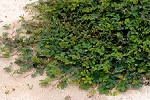
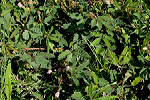
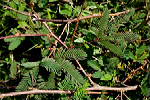
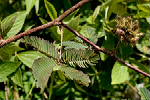
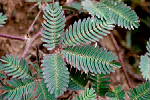
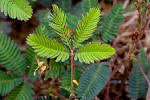
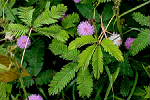
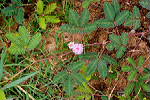


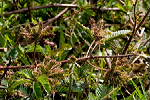
Botany Biology Phenology Ecology Distribution Agricultural importance Cultural control Biological control Chemical control
| Description : | Terrestrial, annual or perennial, erect to prostrate, thorny herb, up to 200 cm long. Roots fibrous, white or brown. Stems rounded, solid, glabrous. Stipules present, spiny. Leaves compound, bipinnate, paripinnate, alternate spiral, stalked, leaflets linear, glabrous on both sides, margin entire, apex acute, base rounded, one-veined. Flowers bisexual, grouped in an axillary, stalked head, sessile, petals 4, pink. Fruits an articulated pod. |
| Seeds : | Seeds sub orbicular to broadly ellipsoidal, flattened, 2.5-3 mm long, pale brown, surface finely granular. |
| Seedling : | With epigeal germination, smelling like garlic, cotyledons ovate, sagitate at base, truncate to emarginated at apex, glabrous, hypocotyls up to15 mm long, hairy, epicotyl absent, first leaf solitary, with 3 pairs of leaflets. |